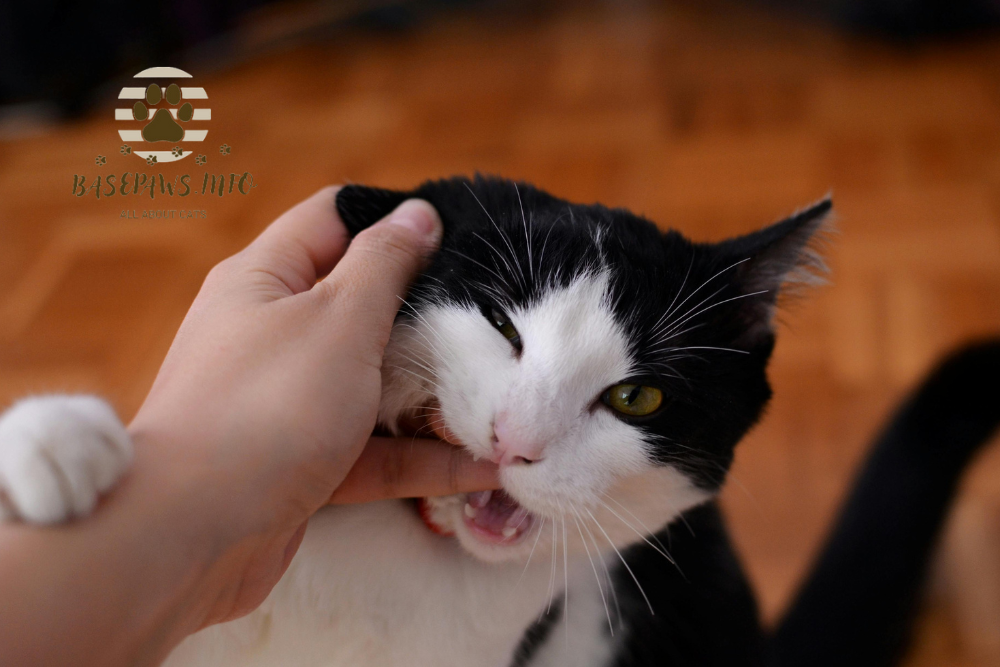Understanding and Addressing Owner-Directed Feline Aggression
If you’re dealing with a cat that shows aggressive behavior toward you, it can be both alarming and confusing. Many cat owners struggle to understand why their once-docile pet has suddenly turned hostile. This can cause stress in your household, leaving you feeling frustrated and unsure of how to fix the problem. But don’t worry, you’re not alone, and this article will offer practical solutions to manage and correct your cat’s aggression.
The good news is that owner-directed feline aggression is a solvable problem. It may take some time, but with patience, proper guidance, and the right strategies, you can rebuild a positive relationship with your cat. Whether your cat is lunging at you, biting, or simply hissing when you approach, there are steps you can take to change this behavior. Understanding the root causes is the first step toward resolving it.
This article provides a comprehensive, step-by-step plan to help you regain control of your household and restore peace with your feline friend. From identifying triggers to behavior modification techniques and medication options, we’ll cover all aspects to address your cat’s aggression effectively. Let’s dive in!
Understanding Owner-Directed Feline Aggression
Is It Normal for Cats to Be Aggressive?
Some level of aggression is natural in cats, especially when they feel threatened or uncomfortable. However, excessive aggression toward humans, especially Owner-Directed Feline Aggression, is not normal. Recognizing the difference between play aggression and harmful aggression is important in tackling the issue.
Common Causes of Aggression in Cats
- Fear: Cats may lash out when scared.
- Territorial behavior: Cats can become aggressive if they feel their space is being invaded.
- Pain or medical issues: Underlying health problems can lead to sudden aggression.
- Misdirected predatory behavior: A lack of proper outlets for predatory instincts can lead to aggression toward owners.
Warning Signs of Aggression
Look out for signs like hissing, growling, flattened ears, swishing tails, or direct lunges. These behaviors are warnings that your cat is upset and may become aggressive if not properly handled. Understanding these signals is key to preventing full-blown attacks.
Five-Step Treatment Plan for Owner-Directed Feline Aggression
Step 1: Identifying and Avoiding Triggers
Importance of Identifying Triggers
Identifying what triggers your cat’s aggression is crucial for stopping it. Does your cat become aggressive when you touch a certain area, or during specific activities like feeding? Understanding these patterns is the first step in making changes.
Strategies for Avoiding Triggers
Once you know the triggers, avoid actions that cause distress to your cat. You might also create safe spaces for your cat, where they feel secure and less threatened.
Step 2: Relationship Rebuilding
Importance of Predictable and Positive Interactions
Cats thrive on consistency. Regular, positive interactions can help rebuild the trust that has been damaged. Start with short sessions of play or gentle petting at times when your cat seems calm.
Avoiding Punishment
Never punish your cat for aggressive behavior, as this will only increase fear and worsen the aggression. Focus on reinforcing good behavior instead.
Step 3: Environmental Enrichment and Tools
Essential Tools for Enriching a Cat’s Environment
An enriched environment provides mental and physical stimulation. Cat trees, scratching posts, and interactive toys can all help reduce aggression by keeping your cat occupied and satisfied.
| Enrichment Tool | Purpose |
| Cat Tree | Provides vertical space |
| Puzzle Toys | Encourages mental stimulation |
| Scratching Posts | Helps with stress relief |
Supplemental Tools for Behavior Management
Consider using pheromone diffusers or calming sprays to reduce anxiety in your home. These tools can help calm your cat and decrease aggression naturally.
Step 4: Behavior Modification
Desensitization and Counterconditioning
Behavior modification can teach your cat new ways to respond to triggers. Desensitization involves gradually exposing your cat to what causes aggression, while counterconditioning replaces the aggressive response with a positive behavior.
Teaching Replacement Behaviors
Use positive reinforcement to teach your cat acceptable behaviors. For example, reward your cat with treats when they respond calmly to a trigger instead of lashing out.
Step 5: Medication
Types of Medication
In some cases, medication may be necessary. SSRIs like fluoxetine can help reduce anxiety and aggression. Your vet may recommend starting with a low dose and increasing it gradually, as needed.
Role of Medication in Behavior Modification
Medication isn’t a stand-alone solution but can complement behavior modification techniques. It helps to calm your cat enough to respond better to the behavior training you implement.
Case Report: Owner-Directed Aggression in a 2-Year-Old Cat
Presentation of the Case
A 2-year-old male neutered domestic shorthair cat displayed aggressive behaviors toward its owners, lunging and biting. After an assessment, it was diagnosed with misdirected predatory behavior and impulse control aggression.
History and Presenting Signs
The cat had been adopted from a shelter, with a history of limited socialization and a respiratory infection. The aggression appeared over time as the cat lacked appropriate outlets for its natural behaviors.
Practical Advice for Cat Owners
What to Do if Your Cat Bites or Scratches You
- Stay calm: Avoid reacting with sudden movements that could escalate the situation.
- Clean the wound: Immediately wash the bite or scratch with soap and water to prevent infection.
- Apply antiseptic: After cleaning, apply an antiseptic to the wound.
- Monitor for signs of infection: Keep an eye out for any swelling or redness around the wound.
- Seek medical attention if necessary: If the bite or scratch breaks the skin, consult a medical professional, as cat bites can introduce harmful bacteria deep into the tissue, potentially leading to serious infections like cat scratch disease or cellulitis.
Are Cat Bites Dangerous?
Yes, cat bites can be dangerous because their mouths carry bacteria such as Pasteurella, which can cause infection if it enters your bloodstream. Bites that break the skin, particularly puncture wounds, create an ideal environment for bacteria to thrive. Symptoms of infection include swelling, redness, warmth, and pus, which may appear within hours. It’s crucial to seek medical advice to prevent the infection from worsening, especially if you experience fever or the bite is on your hands or face.
How to Prevent Future Aggression
Preventing future cat aggression requires a proactive approach. Implement the five-step treatment plan outlined earlier in this article, which includes identifying and avoiding triggers, rebuilding the relationship, enriching the cat’s environment, behavior modification, and medication if necessary. Consistency is vital—create a calm and predictable environment for your cat, using positive reinforcement to reward good behavior. Avoid punishment, as it may worsen aggression. Regularly engage your cat with enrichment activities like puzzle toys or play sessions to reduce frustration.
Rehoming Considerations: When Should It Be Considered?
Rehoming should only be considered after all other avenues have been explored. If your cat’s aggression remains severe despite consistent behavioral interventions and veterinary guidance, rehoming might be necessary for the safety of everyone involved. However, consult a veterinary behaviorist before making this decision, as they can provide insights into whether the aggression might still be manageable. Rehoming should be seen as a last resort after ensuring the cat’s needs cannot be met in the current environment.
Summary and Discussion
Owner-directed feline aggression can be a challenging issue, but with the right combination of behavior modification, environmental changes, and medication, most cats can be successfully rehabilitated. Taking a comprehensive approach is the best way to address the issue, ensuring both the cat and the owners are comfortable and safe.
Ethical Considerations in Treating Feline Aggression
It’s important to always consider the ethical implications of treating aggression in pets, including ensuring their welfare and avoiding unnecessary stress or punishment.







